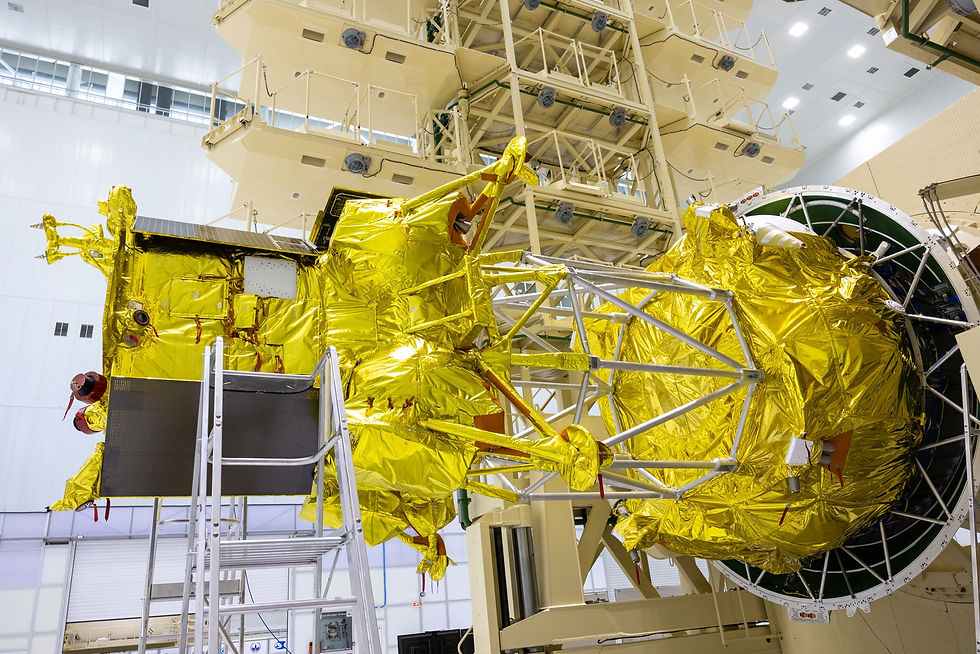Russia VKS launches Kosmos 2556
- Karthik Naren
- May 19, 2022
- 2 min read
'Bars-M' type satellite has a military application, launched from Northern Spaceport of Russian Federation

Moscow, May 19, 2022, At 08.03.32.331 UTC (04.03.32.331 EDT) on May 19, 2022. The launch of satellite 14F 148 Bars-M No. 603 was carried out from Launch Pad PU-3 of Launch Complex LC43 of Cosmodrome GIK-1 Plesetsk by rocket 14A14-1A Soyuz-2.1a. The new satellite received the designation Kosmos 2556., “The spacecraft of the Ministry of Defense of Russia by the Combat Team of the Space Forces of the State Test Cosmodrome of the Ministry of Defense of the Russian Federation was launched into the target orbit at the predetermined time and controlled by telemetry by the Main Space Test Center in honor of the Space Forces GS Titov of the Aerospace Forces,” the ministry said.

14F148 Bars-M is a reconnaissance satellite that maps the ground for the Russian Ministry of Defense. High-resolution spatial images from Bars-M are used to update military topo maps. The new architecture of the Bars-M satellite featured three main components:
Payload Module, MTsA (from Russian Modul Tselevoy Apparatury);
Service Module, MSS (from Modul Sluzhebnykh Sistem);
Propulsion System, SVIT (from Sistema Vydachi Impulsa Tyag);
The cargo bay is an independent module with custom structural systems so that it can be manufactured separately from other spacecraft components and integrated at the end of the manufacturing process.
Given the satellite's ability to capture the Earth's surface with high spatial resolution, it is assumed that it is also used as a spy satellite, that is, for optical reconnaissance.
Satellites transmit data to Earth in the form of an encrypted digital stream to receiving stations. Russia's military leadership made a decision in the 1990s to create a next-generation satellite capable of replacing the Kometa-series spacecraft. The development of Bars, based on the Yantar satellite platform, began, but due to technical and financial problems, the project was stalled. After the shutdown of the last Kometa spacecraft in 2005, which performed cartographic tasks, Russia was unable to finish creating a suitable replacement for it.
In 2007, work resumed on the Bars-M (M – modernized) project. The Russian company TsSKB Progress was tasked with developing a new satellite platform that would be equipped with a payload with an optical scanner manufactured by the company LOMO (Leningrad Optical-Mechanical Association). As for dimensions, the Bars-M model with a mass of more than 4 tons is much lighter than similar ships like the Persona or Resurs-P.
The payload – A suite of high-resolution cameras is installed on board, capable of photographing the Earth's surface with a resolution of less than 1 meter, in addition to a medium-resolution wide-angle camera designed for topographic shooting (can be used for stereo imaging using a dual laser altimeter). The imaging system is called OEC Karat, where OEC (Opticheskiy Elektronnyy Kompleks) stands for Optical Electronic Complex. The telescopes are housed in an RSNKP airtight housing made of carbon fiber composite that retains its shape in the extreme temperature conditions of Earth orbit. Along with a pair of telescopes, the RSNKP contains two laser emitters, calibration devices and a laser rangefinder, reflecting mirrors, and spacecraft attitude sensors.










Comments